HA-08 EAST WINDSOR, HA-25 MANCHESTER
by Tom Cluff
January 2022
Tom Cluff Enters the Army, and Connecticut Nike Sites
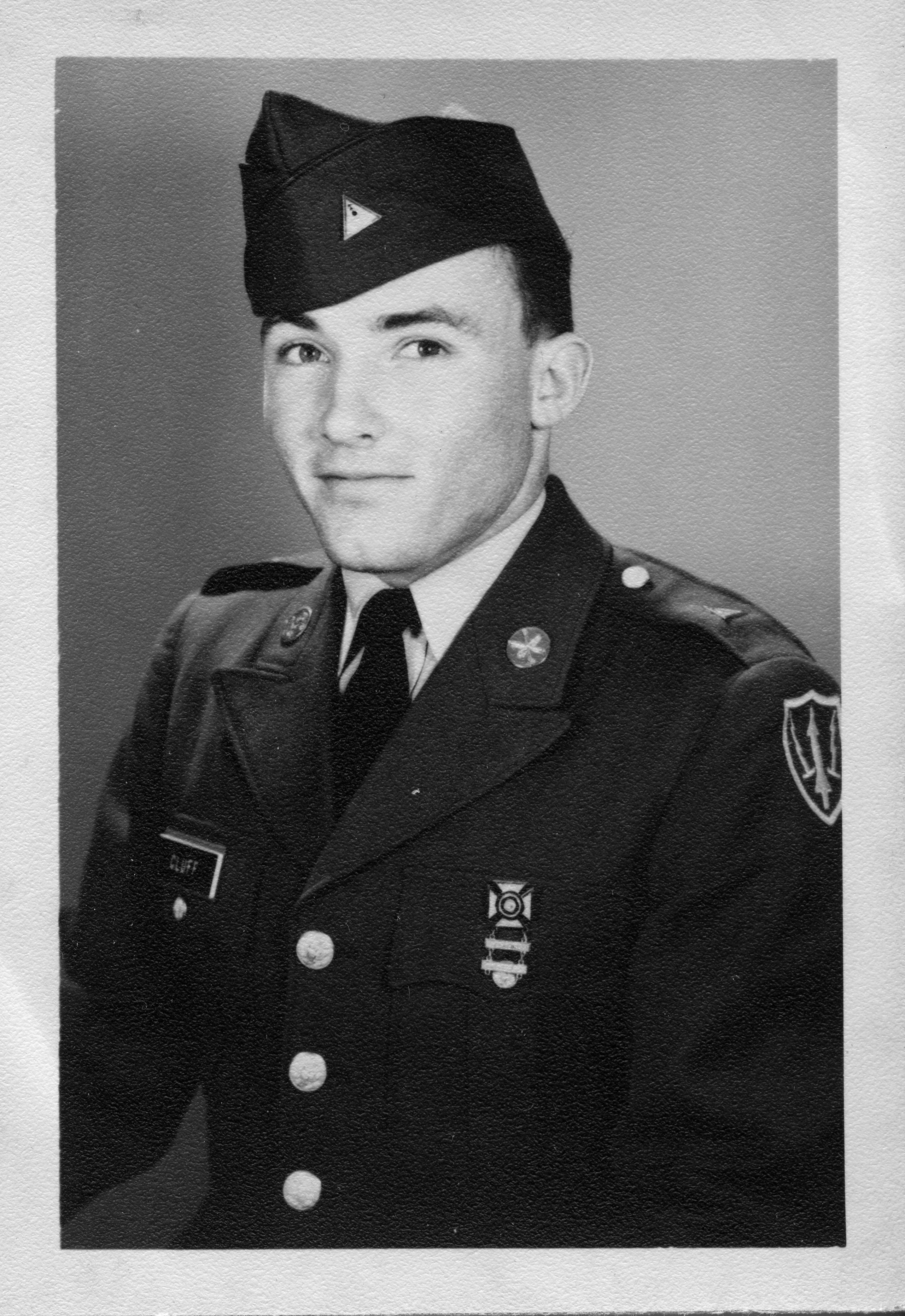
I joined the Army on 26 October 1959, had basic training at Fort Ord, California, and was then assigned to duty at a Nike anti-aircraft missile base in Connecticut. I was first sent to Battery C, 55th Artillery Battalion, in Manchester (HA-25) and a later to Battery A in East Windsor (HA-08) where I served until I was discharged on 25 October 1962.
On 18 January 1960, five soldiers from my basic training company were sent to Connecticut for service at the Nike Missile Bases. They were, Dennis L. Corzine, Robert M. Houtkooper, Thomas A. Morse, Henry M. Swader, and me. Houtkooper was designated group leader. We traveled by plane, stopping in Chicago, where the USO had a place we could get refreshments and hang out for a few hours between flights. Then on to Bradley Field in Connecticut. On arrival at Bradley there was no Army transportation waiting. Houtkooper attempted to call headquarters in New Brittan but got no answer. It was already after dark, and we were stuck. A bus driver offered to drive us to New Brittan, but we had to come up with cash to pay. I recall it was $18.00. We all dug deep and came up with barely enough to cover the fare. My pockets were empty after that. After a long drive through the dark and unfamiliar countryside we arrived at Nike headquarters after midnight. No one was around, the place was dark, so we pounded on the door until someone, half asleep, opened the door. They had no idea we were coming, had no bunks available for us, and were not pleased to be awakened in the middle of the night. But we had copies of our orders and Army orders are not to be ignored, so they found some place to put us for the night and we all got a little sleep.
Assignments to Nike Sites
The group I had traveled with got assigned to different bases. Henry (Hank) Swader (a friend from basic training) and I were sent to sent to the Manchester Nike site. After I was transferred to East Windsor, I saw him at occasional military events that included Manchester and East Windsor personnel. Thomas Morse was assigned to the East Windsor launching site, so I saw him later when I was moved to East Windsor. Dennis L. Corzine went to East Windsor launch area. Robert M. Houtkooper went to the Portland Nike site.
Each Nike site had two locations. One for the missiles, called the launcher area, and another one for the radar and control vans, called the IFC (Integrated Fire Control). They were separated by two or so miles. There were 12 Nike missile sites in Connecticut.
The Manchester IFC was located close to downtown Manchester, so we could walk to town. This was a great duty station; we had a lot of freedom of movement when not on duty. Some Nike sites were located far from a town. Portland in particular was on a hill out in the forest. They needed a car to get anywhere off base.
In Manchester, I met several guys who were later transferred to East Windsor. Joe Esseff became my best friend. We did most everything together until he was transferred to Korea. Manchester was both an operational Nike Site and battalion headquarters, so there were a lot more personnel there than at East Windsor. Captain Harrington was battery commander and after promotion to Lt. Colonel he became battalion commander. He was popular with everyone, a firm hand in command, but always had time to talk to his troops.
East Windsor Nike Site
I was transferred to East Windsor about April 1960. The East Windsor Nike IFC area was off Scantic Road, a mile or so east of CT RT 5. The launch area was north on Phelps Road. Off base Capehart housing was across from the launch area.
The Army and state of Connecticut had a program called the Yankee Brigade to help man the Nike sites. Recruits from the area were promised that they would stay in Connecticut for their 3-year enlistment. At East Windsor there were 6 or more “Yankees” at the IFC and more at the launch area. We got a lot of new recruits just out of basic from the Phoenix, AZ, area. Phoenix recruiting Sargent Edgar was from New Britain, CT, and he sent a lot of Arizona recruits, including me, to Connecticut. At one time there were over 15 soldiers from Arizona at the East Windsor site and many more at other Connecticut sites.
The mess Sgt at East Windsor, Sgt Scarziola (sounded like) was great at getting us the best food possible. We were supposed to get rations from Ft Devins and often did. He was often able to arrange for the rations to come from Westover Air Force Base. They had much better food, including wonderful steaks which the Army never seemed to provide us. He had good cooks, I remember Joe Brubaker, and (?) Ellis especially. We ate better than most Army posts.
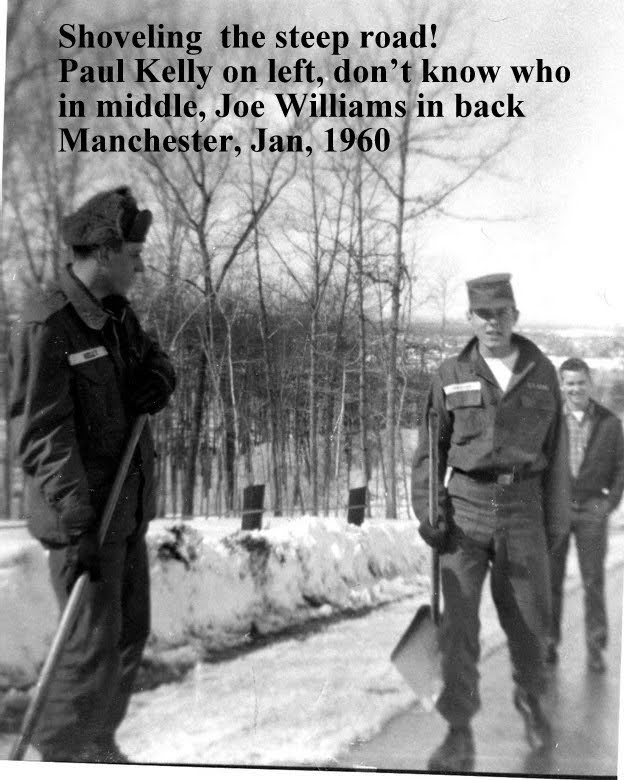
It was a very cold New England January: we recruits spent most of our time shoveling snow or on KP. I had on-the-job training as a radar operator, starting with the job of marking the target movement on a plotting board with a grease pencil. A simple but important function. Then I was trained on the Target Tracking Radar (TTR). As a recruit I often had the job of starting up the electronics very early in the morning. The system used mercury vapor electron tubes to produce dc power for the radar system. The mercury tubes required a long period to heat up and vaporize the mercury. Once vaporized the tubes would glow a beautiful, bright blue, then a second switch applied power to the rest of about 1500 electronic tubes which also required a brief warm up time, then the system was ready for use. This was at the Manchester site; I think East Windsor had solid state selenium rectifiers. There were several mechanical chores on the TTR and MTR, such as leveling the platform, collimation, and some others I forget. When we were on hot battery these checks had to be performed once an hour. On hot status we were in the control vans ready to locate a target and fire a missile in just a few minutes. I think we pulled 12-hour shifts, but we were in heated or air-conditioned vans. The guys manning the missile bunkers had a less comfortable time, I don’t think they had heat or AC and had to do a lot of mechanical functions to prepare the missiles, out in the freezing weather.
Cards were a popular pastime, off duty in the barracks or on duty in the vans. Someone always had a deck. The games were new to me: Hearts, Spades, Hi, Lo, Jack, several others I forget. Hearts was the favorite, we spent lots of time playing that. Fred Willis and I played partners and we were pretty good! Some of the guys played poker for small stakes when off duty, mostly just after payday. One weekend one of the sergeants wanted to play. He seemed to think he could clean up, but it turned out he got cleaned out of over $100.
On 5 July 1960 we traveled to a rifle range to qualify with our M1 carbine rifles. Everyone qualified as marksman. Scores ranging from 177 down to 160. I was on the low end at 165. In August we were scheduled to fly to Ft Bliss to live fire a missile at a target aircraft. The night before leaving, we had a beer bust at the Manchester site as the two units were traveling together. We drank a lot of Army PX 3.2 beer and stacked the empties higher and higher. Someone from my unit threw a can at the Manchester can stack which started a minor war between us. Nothing serious, just a bunch of pushing and horse play. Firing a missile was an annual event, the following year we went in July. We had a new Sargent we didn’t like much, Sargent Moody. After a few beers Fred Willis started making up verses of “Moody River” then, a popular song. The verses were about Sargent Moody and were surprisingly good natured considering no one really liked him. Before the beer bust was over, we were all adding verses and singing. I don’t remember the words (darn) but they were funny, not disrespectful, even Sargent Moody was singing. We sang that over and over on the way back to the base and after that Sargent was our buddy! I guess you could call it “beer bonding.” We found out; Sgt Moody was good to work for once we accepted him as our leader.
Ft Bliss, unit qualification, 1960 and 1961.
After our beer bust the night before, we flew from Bradley Field to El Paso, TX, then took a bus to the barracks in the firing range. Most of the guys were from the east, so they were astounded at the flat terrain, and the sand that blew into dunes against buildings. Some of the unused buildings were buried several feet deep and the doorways blocked. The plants were large yuccas, and not much else.
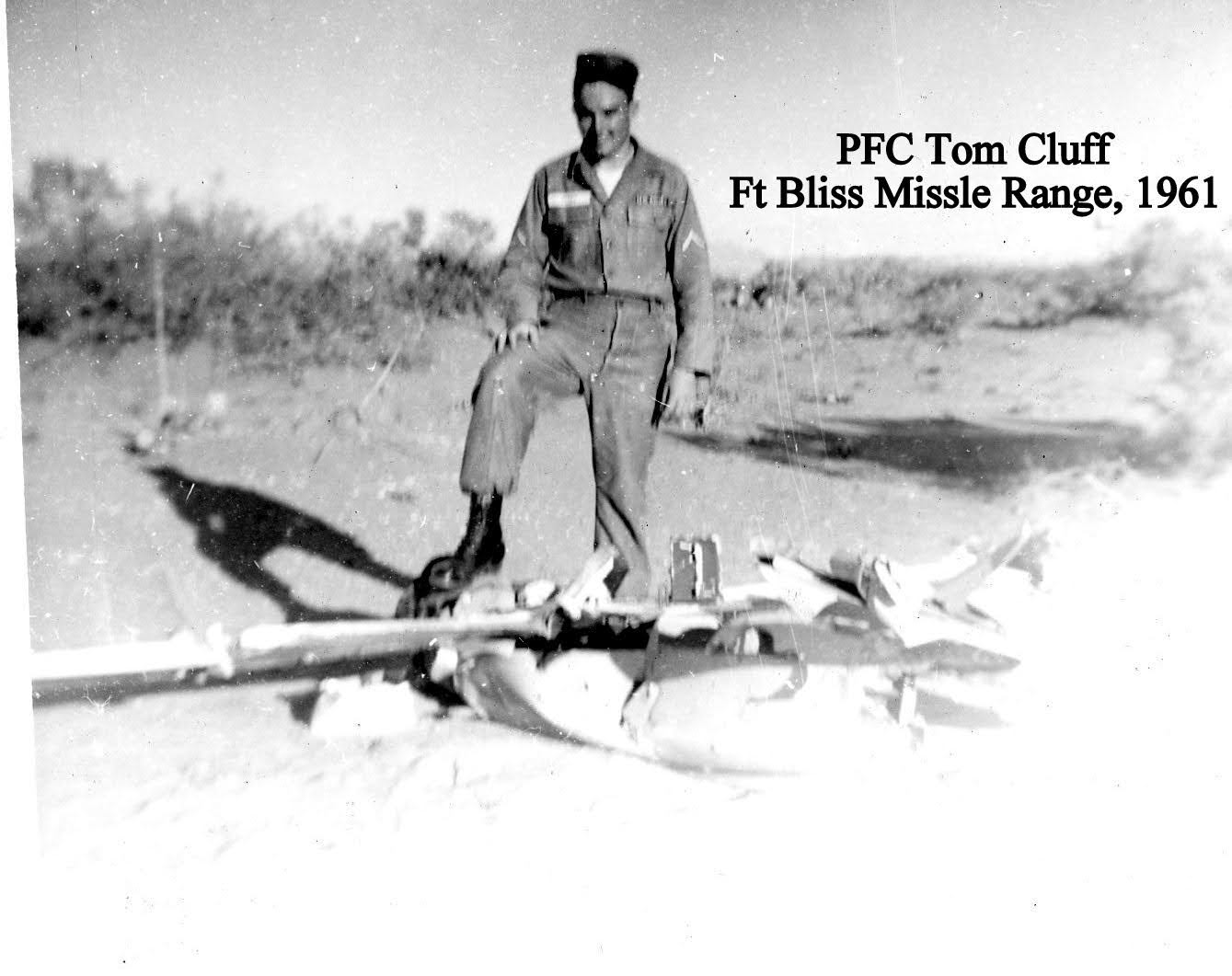
We had a week to set up, fire our missile and destroy the target. The more efficient and proficient we operated as a unit, the faster the unit was qualified for another year. Like an individual qualifying on the rifle range. Proficiency was important to everyone but speed was important also. Both years we took three days to complete the successful firing of a Nike Hercules missile. That left us three play days in El Paso, close to Cuidad Juarez, Mexico. Most everyone went down there and had a wild time. The bars all had names like "Florida Club", "Texas Club", etc. They served good food at bargain prices. Most everyone ordered steaks because they were so cheap. Being from the southwest, I loved Mexican food and tried to talk those easterners into trying something new. No takers. I was the only one that ordered Mexican. It was a delicious reminder of how great Mexican food is.
SP4 Erroll Heslop was a friend from the launch crew. He was from my home town of Mesa, AZ and had, like me, been recruited by Sgt Edgar of Phoenix . We got 3 day passes and hitch-hiked home. A fellow soldier headed to California, picked us up. He had a hopped-up car and asked Erroll to drive, instructing him to drive at least 100 mph across the desert. He needed to get home fast and claimed there were never police along the route. I fell asleep in the back seat, and the few times I woke up I glanced at the speedometer and it was always over 100. We got to Mesa early in the morning. I visited my family, looked up some friends and had a nice but short visit home. We both saved enough money to buy bus tickets back to the base. No time to chance getting another fast ride back to El Paso. We got back with a little time to spare and the following morning we were on our way back to Connecticut.
Education
I had dropped out of high school to join the Army and started taking GED tests while at Ft Ord. When I got to East Windsor, I wanted to complete the tests. SP5 Floyd Bubb oversaw training. He arranged for the tests at Battalion Headquarters in Manchester. I finished those tests and received my diploma from Arizona. He encouraged me to take a series of college level tests and I took and passed several but not all, then we got notified I wasn’t qualified to take these tests, they were intended for officers.
My job in the Army was radar operator at an anti-aircraft Nike Missile site. Part of our job as radar operators was to daily check each of the 1500 electron tubes and other low echelon electronic routines. Higher echelon maintenance was done by trained technicians, NCOs and warrant officers. I got very interested in electronics and had an excellent tutor in SP5 Richard Carlson, our senior radar operator. We had a very nice hobby shop equipped with volt meters, oscilloscope and other interesting equipment. I learned a lot from Richard and shortly before I was discharged, I bought a book series on television repair. I was on night guard duty a lot and read the books, not always understanding, but learning a lot about electronics. Much later I owned a TV repair shop. It all started in the Army. The base had a very sensitive Hallicrafter multi band radio. I strung a wire antenna from one of our towers to the guard shack and so was able to listen to many far-off radio stations. Mostly I listened to AM stations in the US and Mexico. I could often get KOMA from San Antonio and rarely a California station. It was a great way to spend time and helped me stay awake during those long boring hours of guard duty. I had helped my friend Phillip Peay build and use crystal radios when I was in school but my Army exposure to electronics was the awaking of my love of that subject and a life-long pursuit of learning everything I could on the subject. This start of interest in electronics has seen me through many different jobs but always in the electronics field.
My buddy Sp5 Richard (Dick) Carlson hailed from Waltham, MA. He was an electronics whiz kid. He built a tube type stereo amplifier following a schematic in the RCA tube manual. For back then, it was a powerhouse. Most of the tools he needed were in the hobby shop and it was easy to find the chassis, tubes, sockets, etc. required at hobby electronic stores such as Radio Shack. He built a huge speaker cabinet using plywood, it took up a good deal of his cubicle. After his discharge from the Army he studied electrical engineering, earning a master’s degree.
The hobby shop had a dark room and lots of film was developed there. Another popular activity was making rings out of silver coins. Start with a quarter or half dollar in a vise. Tap the edges with a spoon and keep turning the coin as it flared out from the tapping. That was the recommended method but lacking patience for a spoon we used ball peen hammers, very gently! I made several of these rings but over the years have given them all away.
There was a pool table in the day room, it was later moved to the barracks. There was a baseball field, lots of fun games played there in the summer. We had a stereo in the day room and a color TV, yes color, in the barracks. USO would bring around books, cards, some snacks things like that every couple of months. We had lots of activities to entertain ourselves.
Isolation of West Berlin
The Berlin Crisis started in June 1961 and our base went on higher alert. Things were tense, hot and heavy between the US and Soviet Russia. This is when the Berlin wall went up. Several of our buddies who were due to be discharged were given six month extensions. This was a major inconvenience to them. Sp5 Richard Carlson was one that got extended. I was glad he would be around a while longer. He was the best radar operator, and I doubted anyone could replace him.
Joe Esseff was transferred to Korea, in September 1961. Several other friends left, transferred, or discharged. By fall, Richard and I were about the only two left of all the guys there when I arrived in spring 1960. Most of our guys were transferred to Tule Greenland, Korea, or Germany. Two guys were sent to Vietnam as advisers. I knew little about the war there until later. Sargent Shaw, a radar maintenance technician, went to helicopter pilot school. After graduation, he visited us, tossing a silver dollar to the first guy that saluted him as a warrant officer. An Army tradition he informed us! I imagine he went to Vietnam, but I don’t know for certain.
We had some interesting assignments. Once we tracked one of the early space capsules. We often had combined practice missions with the Air Force. Two Air Force personnel would come stay at the base a few days while these training missions were being conducted. They were in radio contact with the pilots of the B-52 bombers. It was a test of us tracking and simulating firing a missile at them, while they were trying to bomb the Charter Oak Bridge. They had several ways to fool the radar and avoid getting shot down. We had our own bag of tricks, so it was a contest. The simulated missile used an explosive rather than nuclear warhead, so the missile had to be quite near the bomber when it exploded. The missile could carry a nuclear warhead which had something like a two and a half mile burst radius but we never simulated that! All of our electronics used vacuum tubes. Transistors and integrated circuits were still in development, so tracking and guidance of missile and target was very crude compared to what is possible today.
One of the warrant officers (WO) was a jokester. We had a scheduled simulated launch mission. A lieutenant (Lt), new to the unit was the command officer. The WO put a CO2 fire extinguisher outside one of the port holes of the command van. It was dark so no one noticed him open the port hole door. When the Lt hit the fire button the CWO pulled the handle on the CO2 causing a loud whooshing noise! The Lt thought he had indeed launched a missile and threw open the second port hole door trying to see the missile he was certain he had launched. I was in the other van so didn’t see this but heard the uproar and later heard the story repeated many times.
The IFC had a Tipsy radar, it was an acquisition radar with longer range than the regular acquisition radar. It tied into our system, but I never saw it in use. The two guys that ran it had no other responsibilities, no guard duty, KP or CQ. It seemed a strange arrangement, I think they were in a different chain of command, perhaps a detached unit. I just never knew. We also had two sets of ground-to-ground radios connecting us to the launch area in case of telephone line failure. They were UHF radios called AN/TRC-47, and were maintained by technicians from Fort Devens, MA.
We occasionally marched in parades as a unit. Once we traveled to Boston, two bus loads of us, to march in a military ceremony there. Our commanding officer marched us around the local roads, but he found the narrow roads weren’t safe for marching so that activity stopped. None of us missed marching. We were not a spit and polish outfit, performance mattered more than looks.
At a ceremony with local officials, East Windsor Nike site was dedicated to Col Lemuel Stoughton a native of East Windsor and officer in the Revolutionary War. A brass plaque was dedicated during a military ceremony. I think the plaque was attached to a big rock, painted red and with a large white A, for Battery A. We were all in dress uniforms to put on a show for local dignitaries and officials. I think this was in 1962 after our site was upgraded and the radar antennas put on higher towers.
Upgrading HA-08
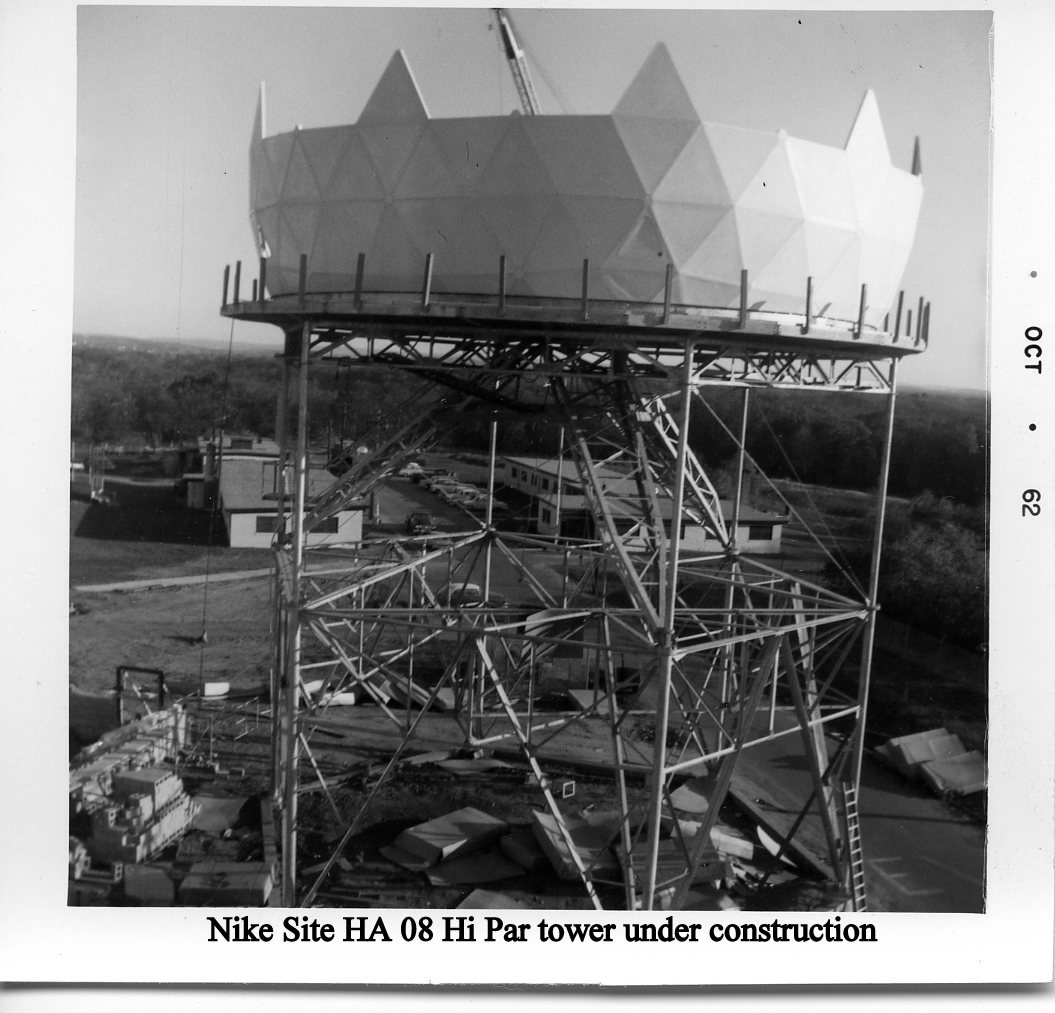
There were a lot of changes made during the upgrade, I best remember we changed from identify “friend or foe” system (IFF) to FIFF, we called it FUIFF so I may have the acronym wrong. The equipment was in a separate van and was built with transistors rather than tubes. The transistors used were germanium and were very temperature sensitive. Just opening the van door caused the system to act up a bit and it would flash various shaped signals on the acquisition radar screen. I mostly remember seeing horseshoe shaped symbols although there were lots of others. I think each site had a symbol used to identify targets. With the new upgrade we were connected to the Cromwell, CT site and our targets were sent from there or perhaps NORAD. I never did learn exactly how it worked but as I understood it, all the Hercules Nike sites in Connecticut were tied into Cromwell. They could see our screens and designate targets for us. This is to the best of my knowledge. As I recall the first phase of the upgrade was completed by spring of 1962. The second phase was mainly the Hi Par radar installation which was still underway in October when I was discharged.
HA-08 Helicopter Landing Pad
When the first phase upgrade was in place there was a dedication ceremony in Cromwell. While our unit did not participate, we did have an inspection by a general. His name eludes me. The grounds around the site were very muddy from all the trenching done to run new cabling. We didn’t have a dedicated heliport yet, so the General’s helicopter landed on a big open space. We were in dress uniforms and in military formation to great our visitor. As the general exited the helicopter, the blades began to tilt to the right, the general had his feet on the ground when the pilot took action to avoid crashing and possibly killing a bunch of us. As the helicopter lifted, it straightened and threw the general face first into the mud. He was stunned but not injured, however his uniform was a mess, and he was to appear at the Cromwell dedication later in the day. First Sargent Kehoe, who was about the same size, lent him a uniform, of course it was an NCO uniform not an officers, but it served the purpose and the general was able to attend the ceremony. We were later told, the general had hit a control causing the copter blades to tilt, however, the helicopter pilot was disciplined for the unfortunate event.
After the near crash it was decided that we needed a heliport. We had a lot of traffic landing at the base during the upgrades. A few of the large banana shaped copters landed there so we needed a large place.
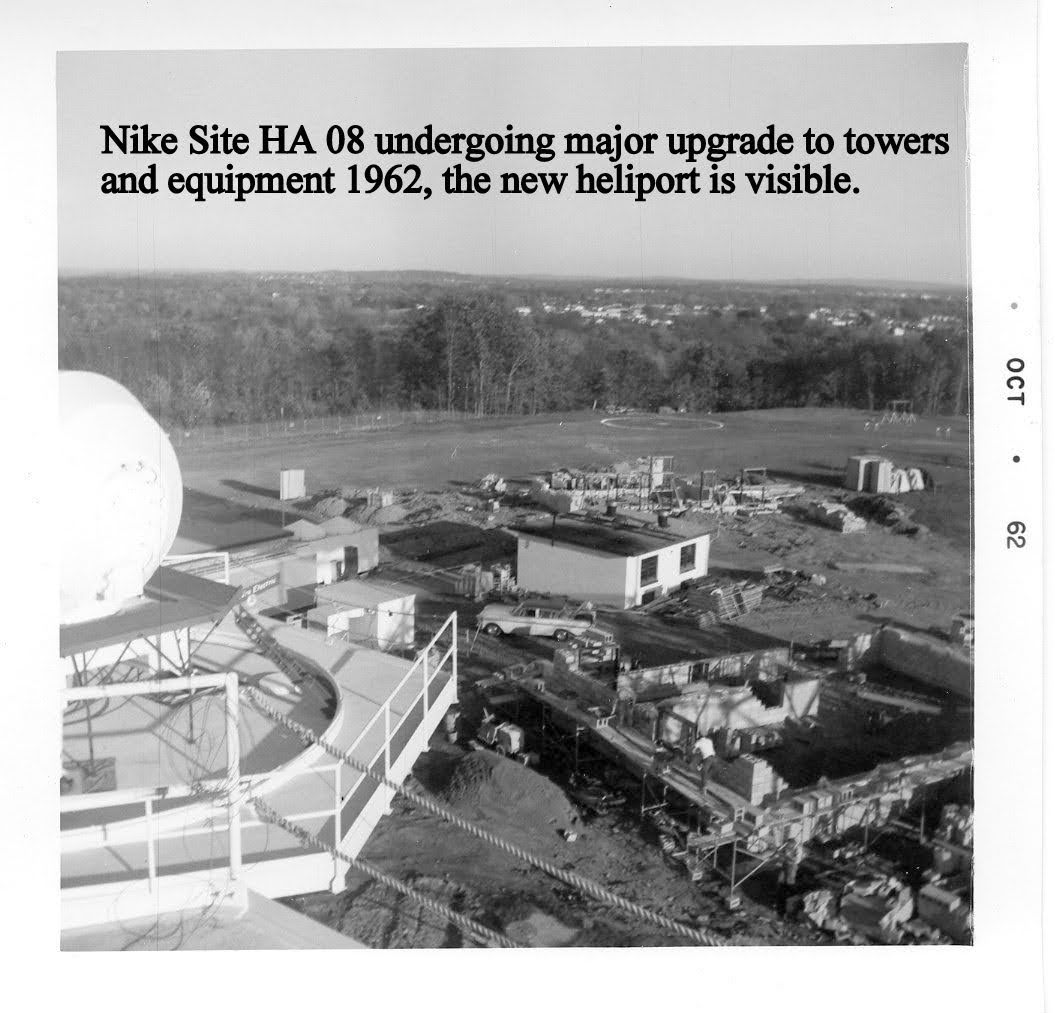
We were operational for several months and I got shifted off the radar crew completely as I was being discharged in October. Another soldier was assigned and trained to take my place on the TTR crew. I spent most of the summer on gate guard duty or nighttime charge of quarters. I also was given a job of building the helicopter landing spot. It was to be a large circle with a large H in the center. We were getting several loads of cement daily for the new towers and I got any extra to pour for the heliport. I dug a trench a foot or so deep and lined it with boards which came off the many packing crates being brought to our base. It was a long slow project just getting whatever left over cement I could snag. When it was finished, I painted the whole thing white. (All the base buildings were removed sometime after 2010 but the heliport was still visible on Google Earth, the sole remaining piece of the entire Nike radar site! (I’m sort of proud of that!) I suspect even the heliport circle is now gone. Likely the site is a residential area.
Cuban Missile Crisis
I was married and living off base when I was scheduled to be discharged October 25, 1962. A day or two before I was to travel to Fort Totten, New York for discharge, we watched President Kennedy talk about Russian missiles in Cuba. He declared a quarantine on Cuba, stopping all shipping that might have more missiles. Shortly after the speech, I got a call and was ordered to report to the base. I reported, we were all called to formation and given a briefing. We were issued M1 30 caliber rifles (with no bullets) and put on guard duty. Normally there was just one guard at the gate. We were placed all around the base perimeter with 4 hours on, 4 hours off schedule.
I was worried that I would get extended like happened the year before but there was nothing I could do about it, so I just went about my duties. A day or so later I got transported to Ft Totten for discharge. I was there about 3 days. It was a strange place. Everyone except the local cadre were there for discharge. We were worried we might be extended. That would put us in a most undesirable situation. We were released from our duty station, unattached and available for anyplace the Army needed soldiers. Everyone took off their patches of rank, I never understood why, but we were all slick sleeve, no one had rank to pull. We had no work assignments, so we spent all our time listening to news accounts of what was happening with the Cuban crisis. The US Navy was stopping Russian ships from entering Cuba waters. Ya-da ya-da, the news went on and on, but no one knew what to expect, would there be a war? This seemed like a real possibility. Then, would we be discharged or extended and sent to who knows where? To my relief the Army mill of paper processes slowly ground on, so on October 25th I was discharged and sent home. And of course, there was no war. Oh happy day!
Army Pay
I have most of my Army pay statements, fun to look over.
I have myW4 of 1961, I grossed $1245.81 and paid $102.80 in tax.
The first Army pay statement I’ve kept was for January 1960. I was E2 or “buck private” no stripe on my sleeve. Gross pay for the month, $85.80, $4.20 clothing allowance, total $90.00, deductions, $8.97 giving me a net of $81.03. Not a lot of money to live on, but needs were small, and things were cheap. The PX (Post Exchange) sold beer in 6-packs for 90 cents. Candy, gum, and other thing were similarly priced. There was always someone that would lend money at so called “military rates,” $5 for $7, $10 for $13, due next payday! I never had to borrow but some of my friends did.
We were always paid in cash and an NCO was always sitting last in line at the pay table. A voluntary $5 donation to the "Soldiers and Sailors Home" was required. I have a receipt for a payment when I was in basic but don’t think we got receipts after that. I have always wondered what that really went for. Is there really such a home? Who lives there? I have my suspicions where the money might have gone but, well, who knows?
Career After Army Service
After I was discharged, I worked for the local telephone company, (SNETCo). I had an FCC radiotelephone license and worked on various radio systems for the telephone company. The company had a contract with the Air Force to maintain 2 ground-to-air radios. One was located at the East Windsor Nike site which was then manned by National Guard troops. I maintained it as part of my job. The radio was in the former Hobby Shop. It was fun to be back on my old duty station once or twice a year.
I moved back to Arizona in 1974. I visited the East Windsor site 2 more times after that, the last in 2010. It was then a church or church school- I didn’t see anyone there to ask, but no one seemed to mind me wandering about. All the towers except the MTR had been removed. The MTR tower had a large cross on it, so large one could see the shadow on Google Earth! The buildings were still there in 2010 but are gone now. If you use Google Earth timeline you can see images of the site going back to 1992.
Looking Back
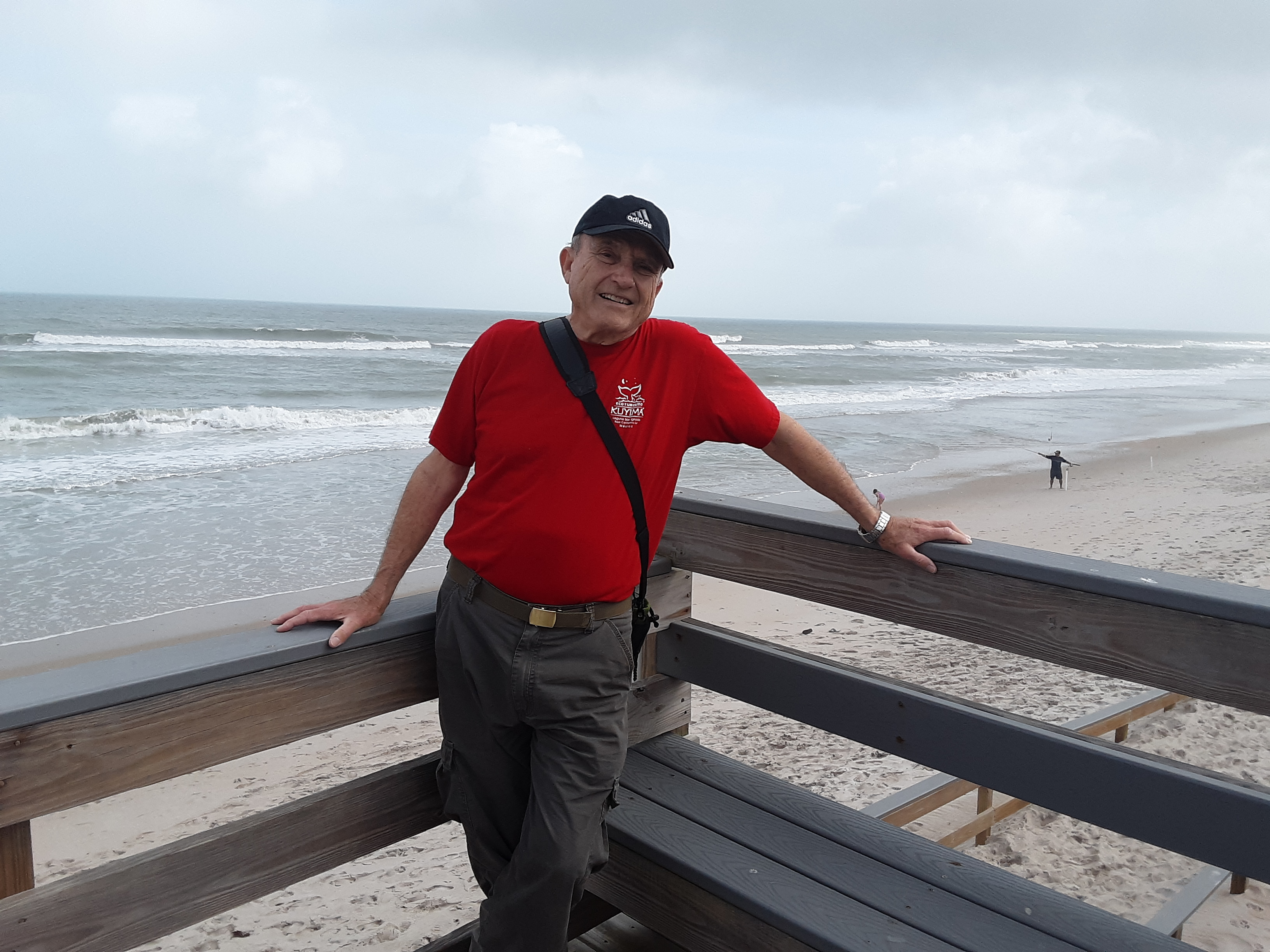
I have fond memories of serving in the Army, I had easy duty compared to many. Basic at Fort Ord, a beautiful place- the firing range overlooked the ocean. It was the best Army training base in the country. Then two great sites in Connecticut, being there was a lot of fun, a bunch of great guys to hang out with, drink beer with, play cards and run like mad when the alert horn sounded. USO dances, hanging out at Auggies and Rays in East Hartford, Nellies Diner on Rt 5. Weekend long beer busts after payday, major cleanup on Monday but next month we had another! The fun never stopped.
I've been reading some of the stories and other info on NikeMissile.org. I find it so interesting and have learned so much about what we were doing back then, the bigger picture about Nike that we were never told back then. I’m amazed how little I knew of the big picture. Need to know was the watchword. I never saw a missile raised, almost never visited the launch area except to visit friends there. Other than guard duty around the warhead arming building had no official visit or tour of the launch facilities. We were taught our jobs, lots of cross training between the radars but the big picture, we didn’t know squat. Good reasons for that at the time but it’s great to understand how the small role we each played added up to a major role in helping defend the nation.
Photos from Tom Cluff's collection: Photos